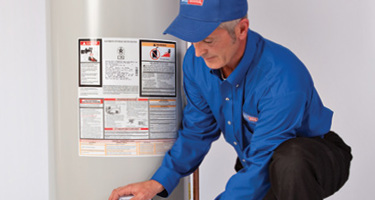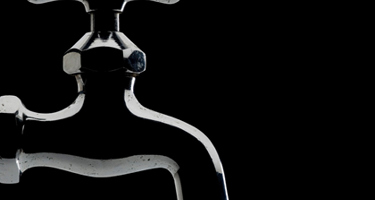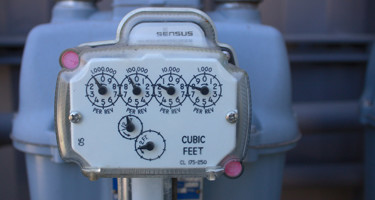
The short answer is:
To fix a running toilet, you'll need to replace the flapper. Before you do that, though, it's a good idea to check the other parts of the toilet to make sure they're not the problem. First, check the water level in the tank. If it's too low, the toilet will run. Adjust the water level so it's just below the overflow pipe.
Next, check the chain that goes from the flush handle to the flapper. If it's too long, it can get tangled and keep the flapper from sealing properly. Adjust the chain so there is about an inch of slack.
--
One of the most common plumbing issues for homeowners is when the toilet won’t stop running. You flush it and the water just keeps going...
...and going...
...and going.
Not only is this irritating, but it will result in a much higher water bill. The good news is that in most cases, this issue is an easy fix - you can even do it yourself. You just need to know the cause of the issue so that you can rectify it. When in doubt, call your local plumber to advise how to fix your running toilet.
4 Reasons Your Toilet Keeps Running
If you have a running toilet long after flushing, it is usually due to four main reasons. These include:
- The fill tube is disconnected.
- The toilet flapper is defective or does not have a good seal.
- The fill height is not optimal, i.e., the float ball isn’t in the right place.
- The fill valve or flapper chain is not the right length.
Once you identify which issue is causing your problem, you can then set to work to sort it out. You’ll need some tools to fix the running toilet among them gloves, pliers, cutting pliers, and replacement parts like a toilet flapper or new fill valve controls.
1. Check Fill Tube
The fill tube could be disconnected if you see that the toilet has a weak flush, or that the toilet bowl is not filling properly with water supply after pulling the flush lever. You’ll also see that the stream of water doesn’t meet up with the flushing loo’s water overflow tube.
This means the loo will not flush and may keep running without filling to the right level. It also won't efficiently drain the toilet bowl.
To fix the issue, all you need to do is reconnect the fill tube and the fill valve. When doing this, check that you also don't have a faulty fill valve. Press both parts firmly to secure them.
Make sure the refill tube remains about an inch above the toilet overflow tube when this lets remaining water out of the toilet. Once you’ve made these adjustments to the overflow tube, pull the toilet flush lever to check if the water pressure is now correct in your normal flush cycle.
When you full flush the toilet, watch that the water flow is going towards the toilet overflow tube. You should notice a stronger flush and water stream. Make sure you see the water level drain out of the bowl.
2. Check Toilet Flapper
If you have a defective or leaky flapper, you'll need to replace the flapper. You can check it by opening up the tank lid and observing it inside the tank. Turn off the water supply before you get to work.
Sometimes the issue is an old flapper after much wear and tear. If it isn’t in good condition, then the flapper won't create the suction effect necessary to close the water off after flushing and it will continue to run, resulting in a running toilet.
To put in a new one, you’ll need to:
-
Take the old one off the toilet and take it with you to the hardware store. This is so that you can buy the same model that fits your loo. This is essential, as there are several kinds of toilet flappers. They also work in different ways. Some kinds have a ring that connects above the piping. Others clip over the end of the large tube within the cistern.
-
If you struggle to find the exact flapper you need, it’s best to purchase a universal design. These can be used on a variety of toilet models, and they’re reasonably priced.
-
You can also purchase “one size fits all” flappers online. When you get it, put in the new flapper and test that it works. Remember to turn off the water before you replace the flapper. It’s best to test once you have completed your installation and adjustments.
-
If the water keeps running after you flush the toilet, this means the flapper does not seal properly. In this case you will need to put in another one so that it does seal properly.
Sometimes it works better to replace the entire toilet overflow tube and flapper apparatus to ensure the system is properly sealed. If you can’t find a new flapper that seals, replacing the complete system is a good alternative.
To perform this replacement, you will need to remove the toilet tank. You don’t need specialized skills or tools to remove the tank. You can do it yourself fairly easily.
3. Check Flapper Chain
The flapper chain lets fresh water in and used water out of the toilet system by opening up the flush valve. If the chain is too long or too short, or gets caught underneath anything, it cannot perform this task optimally.
It could stop the flush valve from closing properly after flushing, which will result into water continuing to run. To fix this, you’ll need to observe how the chain and flush valve work together when you flush the loo and adjust the chain length accordingly.
You may have to get a new length of chain from your hardware store if the chain is not long enough. If there's excess chain, you can use the cutting pliers to trim it to the right length.
Make sure the chain is secured properly before testing your handiwork. If the toilet continues to run, you may have to keep adjusting the chain until the length is optimized.
Be sure to close the toilet tank securely when you've finished.
4. Check Fill Height
Most toilets have an adjustable float that controls the water level in the toilet tank. You'll see it immediately when you open the tank lid. If the float is set low, the fill valve will not let in enough water to flush the system properly after use.
If the float is too high, however, then the fill valve will let in water. You'll see that excess water spills over into the toilet overflow tube. This results in a running toilet even after flushing.
To set the float at the right level to stop water continuing to run, you need to:
-
Look for the point at which the float is level in the top tank.
-
Mark the point on your toilet overflow tube.
-
Flush and observe if the system pulls water up to the mark you just made via the refill valve.
-
If it doesn’t reach the fill level mark near the fill valve, adjust the float down or up as necessary, using the mark as a guide for levelness.
-
In older toilets, you’ll need to adjust the float cup by bending the metal rod or float arm attached to it.
-
In modern or newer toilets, push the floater clip, or turn the screw of the flush rod.
-
Keep adjusting the rod until the water supply stops running when the tank empties and then refills from the fill valve.
-
You can then let the water level get to a point that’s at the minimum of one inch beneath your level mark inside the tank. You can also set the toilet fill valves to decrease or increase to this point.
In some cases, the ball cock or float ball is the problem when you notice a running toilet tank. There also may be a problem with the column float attached.
To fix this running toilet issue, you’ll need to replace the old system in the tank with a new float ball or brass rod to achieve the right float height.
You'll find parts at most stores, and can replace them in the tank in a few minutes.
Call ARS/Rescue Rooter For Quick Toilet Repairs
Running toilets are a pain, but if you follow these helpful guidelines, you'll be able to fix most reasons why your toilet won’t stop running.
If you’ve tried the options and you still have an issue with your fill valve, tank or bowl, then we strongly advise you to call in an expert plumber to sort out the matter.
Contact ARS/Rescue Rooter today to schedule your plumbing repair services, or to install a brand-new toilet tank.
More Toilet Blog Articles: How Do I Choose The Best Toilet?






